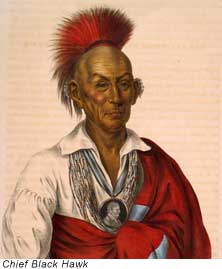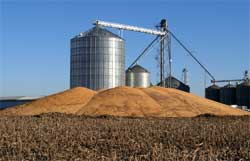
 Iowa is known for famous people from the state. Visit the birthplace of Herbert Hoover, the 31st President of the United States, in West Branch. Henry A. Wallace, President Franklin D. Roosevelt's Vice President, was from Iowa. Carrie Chapman, a leader in the movement to get women the right to vote, was also from the state. Iowa's rural land and people have been seen worldwide in the paintings of Grant Wood, a renowned artist. Iowa is known for famous people from the state. Visit the birthplace of Herbert Hoover, the 31st President of the United States, in West Branch. Henry A. Wallace, President Franklin D. Roosevelt's Vice President, was from Iowa. Carrie Chapman, a leader in the movement to get women the right to vote, was also from the state. Iowa's rural land and people have been seen worldwide in the paintings of Grant Wood, a renowned artist.
Iowa was named after the Iowa River. It is an Indian word meaning "one who puts to sleep" or "beautiful land." The state's nickname is the "Hawkeye State," after Chief Black Hawk, leader of an Indian tribe
who was relocated to Iowa after their attempt to resist white settlement failed. The abbreviation for Iowa is IA.

 Iowa is a West North Central state bordered by Minnesota to the north, Wisconsin and Illinois to the east, Missouri to the south, and South Dakota and Nebraska to the west. Iowa is a West North Central state bordered by Minnesota to the north, Wisconsin and Illinois to the east, Missouri to the south, and South Dakota and Nebraska to the west.
Located between the Mississippi and Missouri Rivers, the state's landscape includes wooded hills, river valleys, and prairies. Waterloo and Davenport are eastern cities with agricultural industries that mark the beginning of the transition between the industrialized East and the less industrial West. Iowa is known for having some of the world's most fertile soil.

Farms make up about 92 percent of Iowa's land; only Nebraska has a higher percentage of farmland. About one-third of the best farmland in the United States is located in Iowa. Most of the state's residents are in someway dependent upon Iowa's fertile soil and many crops.
Iowa is usually first or second in the country in the production of corn, oats, soybeans, cattle, milk, and calves. The state harvests so much corn that it has been called the "Corn State" and "the land where tall corn grows." Because corn is one of the main ingredients in hog feed, Iowa leads the country in hog production, raising about a quarter of the nation's total.
 Because Iowa is such an important agricultural state, it plays an important role in feeding the country. Iowa farms produce about seven percent of the nation's food supply. In spite of this, small farms have almost totally disappeared in Iowa. A majority of the state's farmers have become big businessmen with very mechanized farms that need less manpower. Therefore, many of the state's young residents have moved to cities, both inside and outside the state to find work. This is not only happening in Iowa; it's happening all over the country. Because Iowa is such an important agricultural state, it plays an important role in feeding the country. Iowa farms produce about seven percent of the nation's food supply. In spite of this, small farms have almost totally disappeared in Iowa. A majority of the state's farmers have become big businessmen with very mechanized farms that need less manpower. Therefore, many of the state's young residents have moved to cities, both inside and outside the state to find work. This is not only happening in Iowa; it's happening all over the country.
In recent years, Iowa has experienced great industrial growth. As you might expect, agriculture-related businesses such as food processing and the manufacturing of farm equipment have become major industries. See Quaker Oats, the largest cereal plant in the United States, in Cedar Rapids. If you like popcorn, go to Sioux City, home of the largest popcorn processing plant in the country. The largest wheel-tractor plant in the United States is located in Waterloo. Iowa's factories make other products including ballpoint pens, washing machines, and office furniture, but most of the state's industrial output is based on farm production.
In spite of the importance of agriculture to the state, only about ten percent of Iowa's residents live on farms. In contrast, about 60 percent live in cities. About 66 percent of Iowa's workers are employed in service industries, including wholesale and retail trade and health care. Des Moines, the state's capital known for its Court Avenue District with its fine restaurants and history, is a national center of the insurance industry.
|

![]()
